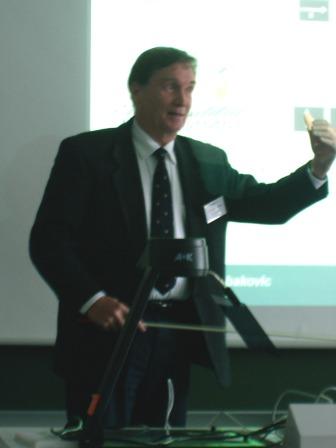|
|
MECHANISM OF SACCHARIN TRANSFORMATION TO METAL SULFIDES AND EFFECT OF INCLUSION ON CORROSION SUSCEPTIBILITY OF ELECTROPLATED CoFe MAGNETIC FILMS
Ibro Tabakovic, Steve Riemer, Katmerka Tabakovic, Ming Sun and Mark Kief
Seagate Technology, Recording Heads Research and Development
Bloomington, Minnesota 55435, USA
|

|
The electroplated magnetic alloys (1.0T Ni80Fe20, 1.6TNi45Fe55,
2.4T Co40Fe60), obtained in the presence of sacharin, and sputtered magnetic alloys of the same
composition showed dramatically different corrosion properties at pH 5.9 . The higher corrosion susceptibility of
electroplated magnetic alloys, known for many years, was generally attributed to the sulfur inclusion into deposit, but
there was no direct evidence about the structure of the sulfur-containing molecules included in deposit.
We have analysed the electroplated, EP-CoFe, and sputtered, SP-CoFe, magnetic films using electrochemical,
SIMS, XPS and HPLC techniques. The analysis of electroplated CoFe films obtained in the presence of saccharin
revealed the presence of saccharin, benzamide, o-toluenebenzamide (HPLC) and metal sulfides (XPS) in EP-CoFe
deposits. The proposed mechanism for saccharin transformation to metal sulfides involves four steps:
(i) a reductive cleveage of C-S bond in saccharin giving rise to benzamido sulfinate, (ii) a desulfurization
step leading to banzamide and sulfur dioxide, (iii) an electrochemical reduction of sulfur dioxide to hydrogen
sulfide, and (iv) a reaction between H2S and M2+ (M = Co, Fe) to metal sulfides. The higher
corrosion susceptibility of EP-CoFe magnetic alloys than SP-CoFe magnetic alloys was discussed in terms of the
mechanism of sulfur-associated corrosion.
|
|